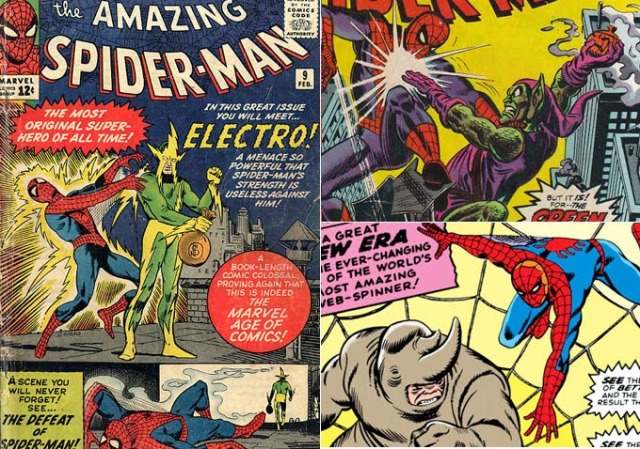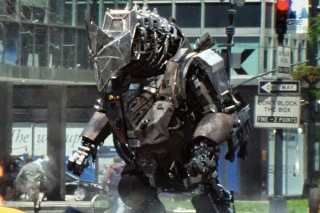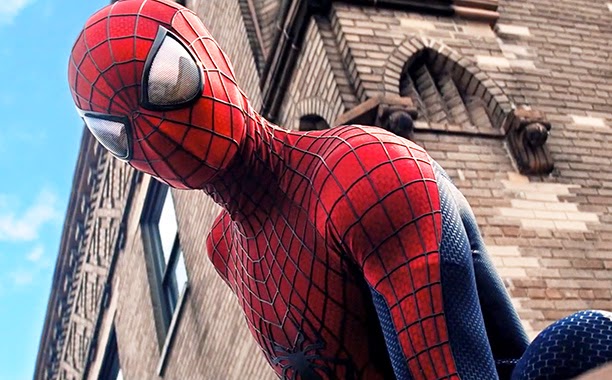To prevent a horrible, destructive future, the X-Men must travel back in time to fix the mistakes of the past. Ironically, not only is this the basic outline of X-Men: Days of Future Past, it’s the reality of the X-Men franchise exemplified by this movie. By applying a massive scale time travel story, Fox and director Bryan Singer have made a bold play to undo many of the bumps and bruises the X-Men movies have hit along the way. While the odds are usually in favor of things becoming a messy, “reach exceeds their grasp” event, Singer and company do everyone a service by keeping their franchise building in check and delivering a tight and terrific standalone film that doesn’t miss a step.
Sound like a lot to process? It is but watching the movie you’d never know. The plethora of characters and separate story arcs are handled with a level of care that makes a certain recent superhero flick look shamed. Everything clicks together in a beautiful, coherent way that lets everyone shine and keeps the interest up throughout.
DOFP has so many good things going for it but the thing that stands out is how contained the story is. Yes, there’s more than a few instances of world building and sequel-setup by the end, but the main story can stand alone without relying on a “continued next time” scenario. Even those who haven’t seen all the X-Men movies should be able to pick up on things fairly quickly and above all, enjoy them. Behold the power of a well-planned story with heart.
Based off the Chris Claremont comic arc of the same name, DOFP capitalizes on the prospect of combining old favorites and new in a way that makes sense. Stewart and McKellan comfortably step back into a franchise that had all but written them out (as do a few other faces that would be criminal to spoil), while Jackman gets to apply his classic role this time as a sort of mentor to a forlorn Xavier.
But it’s the returning First Class members who carry the show. Xavier’s journey from lost to found is a highly compelling route for a character who normally is the most composed person in the room and McAvoy sells it. While blunt, the subplot about him throwing his gifts away via a big scary needle in the arm shows that this character probably can’t get any lower. But hey, this X-Men, the overlord of obvious metaphors. Fassbender’s cool, debonair disposition as Magneto continues to make his take on the character a constant center of attention. The bromance these two characters share is continued in a most satisfying way as they both hit forks in the road that will pit them against each other, despite their mutual admiration.
With X-Men and X2 director Bryan Singer back at the helm and First Class director Matthew Vaughn helping out on story, DOFP takes things one step further beyond the finale of the most recent film in actually feeling like an X-Men movie. Classic characters assembling in a pivotal storyline as stadiums fall from the sky and the future hangs in the balance are some things that show that the franchise is upping the ante and refining everything it can. The action is great and the character interplay has never been better.
However, nothing shows more promise for the series’ direction going forward than what the filmmakers have done with Evan Peters’ Quicksilver. Originally assumed to be a throwaway inclusion appease character rights technicalities (Disney also has plans to utilize the character in next year’s Avengers sequel), the entire sequence featuring the character is like a whole new ballgame. Peters’ presence is an unexpected jolt of lightning as the character elevates the entire sequence he’s involved into a high-octane funny-fest that showcases a good dose of blockbuster fun. Every second of this amazing scene shows that this character was indeed bought in with a purpose: amusement, among other things.
Admittedly, continuity sticklers are going to have a hard time with the film, as the creative team have all but thrown out a strict timeline. At least one previous film is totally ignored in the timeline, as are several technicalities that may be worth a head scratching. But that’s ok because the filmmakers have now reached the point of realizing that continuity won’t be an issue as long as you deliver a great film.
DOFP only rarely suffers from slack pacing in an otherwise taught plot and has only a few instances of sub-par visual effects that have plagued the series on and off. What really would have been welcome (and may be the case for next time — who knows?) is a more vibrant color palette that embraces the comic book origins. Not that things need to go full tilt on the saturation but a more refined color scheme on a comic book movie like this could do wonders.
Looking to the past to cater to the future can be a wise choice. It certainly was for this franchise going forward. X-Men: First Class set up a possible direction going forward and Days of Future Past jumped all over it. The X-Men renaissance is upon us at last.
8.5/10






